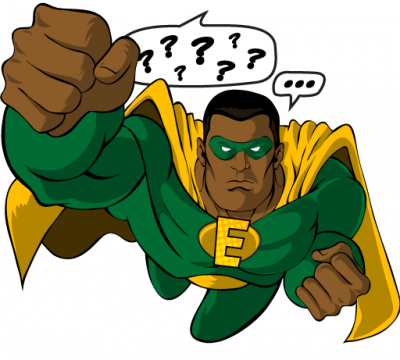Ask the Superexpert about Electricity & Natural Gas
Have you ever wondered why shoes hanging on a power line don’t get fried? Or why natural gas flames are blue? Now you can get answers to these and all your energy-related questions. Just Ask the Superexpert!
The Superexpert answers new questions regularly, so check back to see if YOUR question is up!
Shoes hanging on a power line don’t get burned for the same reason that birds standing on a power line don’t get shocked: they don’t give electricity a path to the ground, so electricity stays in the line and does not go through them. But if the shoes were to touch a power line and a power pole at the same time, they would provide a path to the ground and would get blasted with electric current. It wouldn’t be pretty!
By the way, if you ever see someone throwing shoes up onto a line, tell them to stop! The shoes can damage the power line, or someone trying to get the shoes down could be seriously shocked or even killed.
More homes in the U.S. are heated by natural gas than by electricity.
The ancient Chinese were the first to discover underground deposits of natural gas. In 600 BC, Confucius wrote of wells 100 feet deep yielding water and natural gas along the Tibetan border. The Chinese piped the gas to where it was needed through long, hollow bamboo stalks.
Yes. In 1626, French explorers found Native Americans igniting gases that were seeping into and around Lake Erie.

